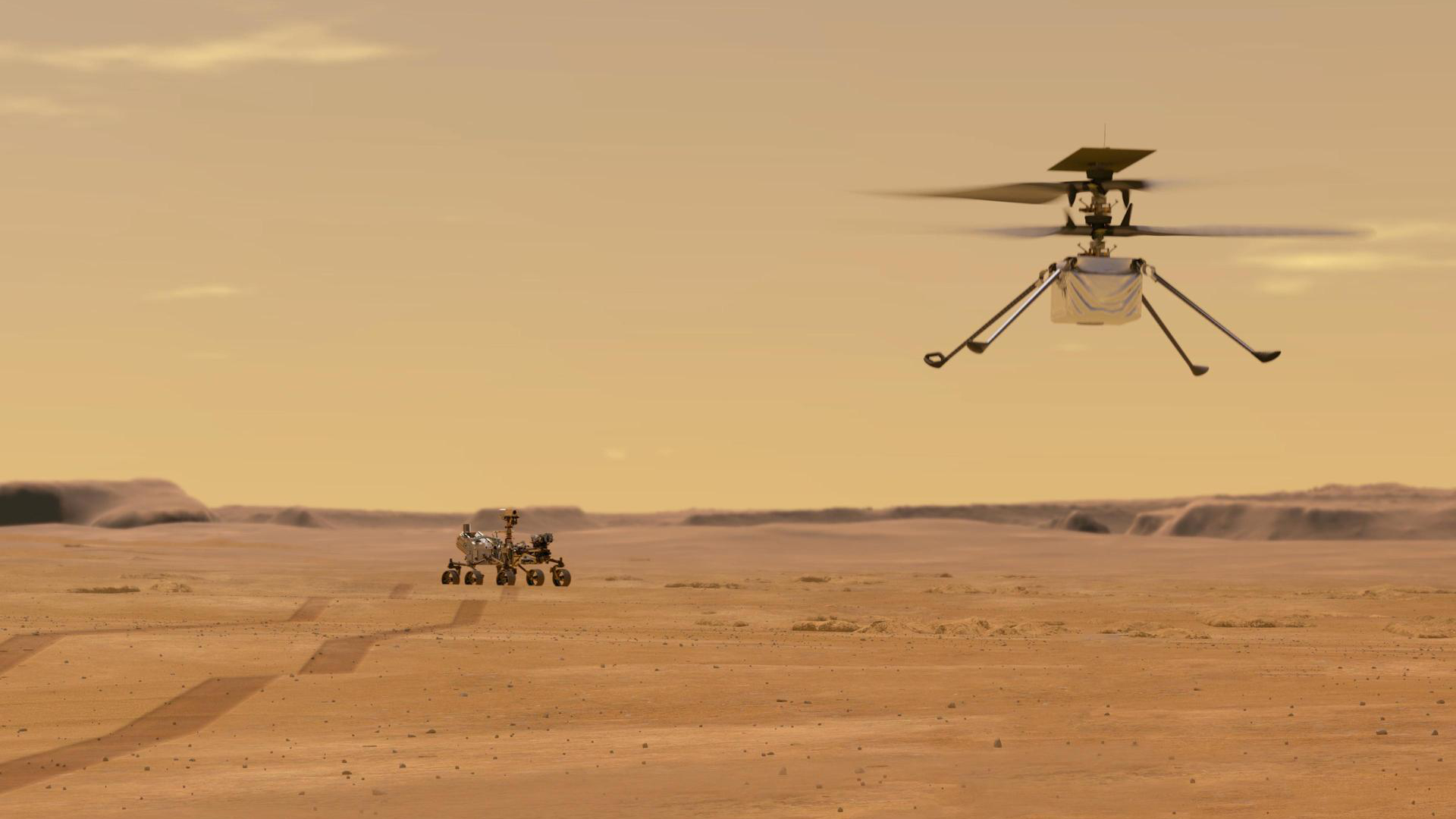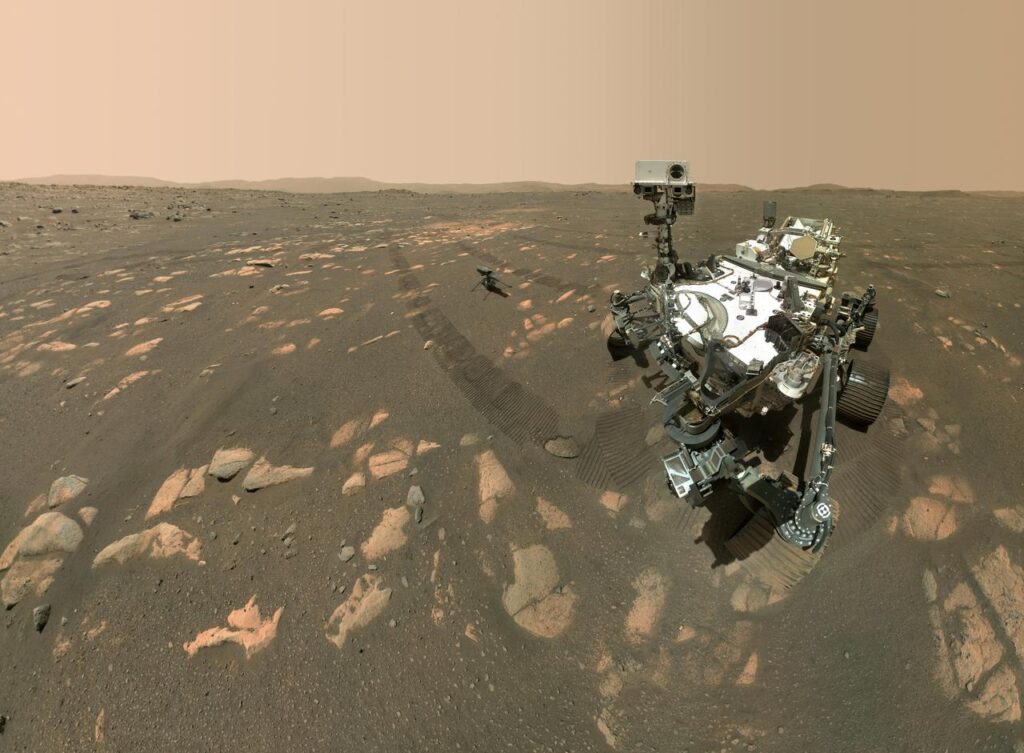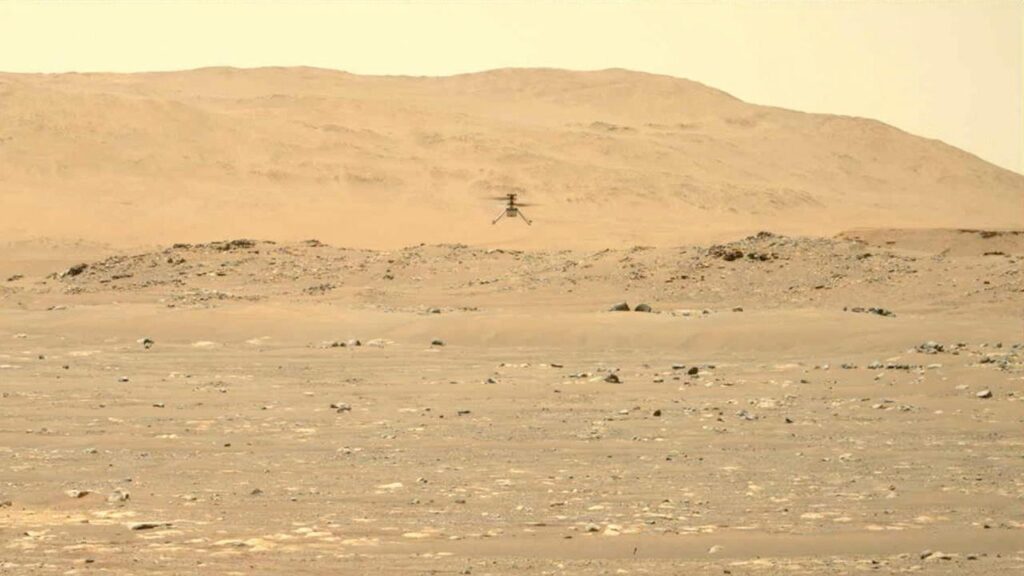 19th April 2023 marked exactly two years since NASA Ingenuity Mars Helicopter performed its first flight on Mars. And yet a week before that second anniversary, on 13th April, the pioneering rotorcraft achieved its unprecedented milestone, performing the 50th flight above the surface of the Red Planet.
19th April 2023 marked exactly two years since NASA Ingenuity Mars Helicopter performed its first flight on Mars. And yet a week before that second anniversary, on 13th April, the pioneering rotorcraft achieved its unprecedented milestone, performing the 50th flight above the surface of the Red Planet.
On 18th February 2021, the NASA Ingenuity Mars Helicopter landed on the bottom of Jezero Crater on Mars, within the Mars 2020 mission, attached to the underside of Perseverance rover. Approximately one and a half of month later, the rotorcraft separated from its carrier – allowing the rover to take care of its tasks – and itself to become the first-ever powered aircraft to fly on another planet.
By design, the Ingenuity was intended to be a mere technology demonstrator that would prove the possibility of powered, controlled flight of an aircraft on another planet. Initially, that was planned to be achieved in no more than five flights. However, it soon turned out that the Mars Helicopter performs remarkably well in the new, unfamiliar and extremely harsh environment.
Therefore, NASA made the decision to take advantage of that fact and continue performing consecutive flights for as long as technical condition of the Ingenuity allows. Flight by flight, the helicopter allows to look at more and more new areas of the Mars surface in a way that none of the previous missions to the Red Planet have provided.
Pushing capabilities of the Ingenuity to the limits during each flight, allows to gain flight data useful for creating further rotorcraft to fly on Mars in the future. For example, such as Sample Recovery Helicopters being developed within Mars Sample Return project, which aims to develop methods to collect samples of the Mars soil extracted by the Perseverance rover.
As time passed, the Mars Helicopter evolved from just the technology demonstrator to operations demonstrator with the new task of exploring the potential benefits of aerial scouting and other roles for future exploration of Mars and other planets. And through cooperation with its six-wheeled mate, the Perseverance rover, the Ingenuity proved that aircraft can successfully act as scouts during future Mars missions, mostly by taking images to provide essential terrain information not only for scientist, but also for rovers, which are quite limited in this regard.

‘Just as the Wright brothers continued their experiments well after that momentous day at Kitty Hawk in 1903, the Ingenuity team continues to pursue and learn from the flight operations of the first aircraft on another world.’ said Lori Glaze, director of the Planetary Science Division at NASA Headquarters in Washington.
On 19th January 2023, the Ingenuity helicopter left the relatively flat region of Jezero Crater and headed towards riskier terrain. Since then, the rotorcraft performed eleven flights, in addition setting its new records of speed with 6.5 metres per second (14.5 mph) and altitude of 18 metres (59 feet).
In mid-April of 2023, the rotorcraft surpassed the greatest expectations of its creators at the NASA Jet Propulsion Laboratory, and all the people involved in its mission, by recording already the 50th flight in its logbook.
During that remarkable flight, the NASA Ingenuity Mars Helicopter flew a distance of 322,2 metres (1057,09 ft) in 145,7 seconds, at an altitude of 18 metres (59 ft), thus setting the new – already mentioned – altitude record. The rotorcraft completed the milestone flight with landing near the 800-metre-wide Belva Crater. What’s more, the Helicopter Team from NASA is already planning the next repositioning flight of the Ingenuity, after which the rotorcraft will proceed with its next task of exploring the area of Fall River Pass, being a part of the Jezero Crater.
Currently, just as spring dawns in the Earth’s Northern Hemisphere, the Ingenuity is also beginning to stop experiencing the deep cold and regional dust events of winter on Mars. However, images taken by one of cameras of the Perseverance rover show that the Mars Helicopter still gets covered in brown dust at nights, which may significantly affect the performance of the Ingenuity solar panel.
Therefore, in order to make sure that the Ingenuity keeps on working as it should, every morning the Perseverance is looking for signal from the helicopter using a device called Helicopter Base Station located in the rear part of the rover.
‘We are not in Martian Kansas anymore. We’re flying over the dried-up remnants of an ancient river that is filled with sand dunes, boulders, and rocks, and surrounded by hills that could have us for lunch. And while we recently upgraded the navigation software onboard to help determine safe airfields, every flight is still a white-knuckler.’ – said Josh Anderson, Ingenuity operations lead at NASA Jet Propulsion Laboratory in Southern California.

In addition, flights of the Ingenuity are now riskier than before, as it currently flies over areas with a much more rugged surface, landing on which can be potentially hazardous for the fragile rotorcraft. Nonetheless, the Mars Helicopter will be flying even more frequently in the upcoming days to stay within range of electronic communication with the Perseverance rover, which, thanks to AutoNav feature, can cover even hundreds of metres every day.
‘Ingenuity relies on Perseverance to act as a communications relay between it and mission controllers here at JPL. If the rover gets too far ahead or disappears behind a hill, we could lose communications. The rover team has a job to do and a schedule to keep. So, it’s imperative Ingenuity keeps up and is in the lead whenever possible.’ – said Josh Anderson.
In recent days, the Ingenuity Mars Helicopter completed surveying Foel Drygarn, which is of great interest to astrobiologists because of potential presence of hydrated silica there.
It is now twenty-four Earth months, since the first-ever Mars Helicopter landed on the surface of the Red Planet, together with the Perseverance rover. During this time the Ingenuity has been in continuous fly worthiness for all 728 days and exceeded its expected lifetime by 45 flights. By the time of its 50th flight, the rotorcraft had flown a total time of 89 minutes, covering a distance of more than 11.6 kilometres (7.1 miles).
‘When we first flew, we thought we would be incredibly lucky to eke out five flights. We have exceeded our expected cumulative flight time since our technology demonstration wrapped by 1,250% and expected distance flown by 2,214%.’ – said Ingenuity team lead at JPL, Teddy Tzanetos.
After such a long time and intensive operation in the harsh environment of Mars exceeding all expectations, the Ingenuity is already showing some signs of wear and tear on some of its components. That, sadly, means its mission may be slowly coming to an end.
‘We have come so far, and we want to go farther’ – said Tzanetos. ‘But we have known since the very beginning our time at Mars was limited, and every operational day is a blessing. Whether Ingenuity’s mission ends tomorrow, next week, or months from now is something no one can predict at present. What I can predict is that when it does, we’ll have one heck of a party.’ – added Ingenuity team lead at JPL.
However, we hope that despite the noticeable signs of fatigue, the first in history powered aircraft to fly over another planet, just like his wheeled companion, still has many Sols (as the days on Mars are called) ahead of it. And we keep our fingers crossed that during this time spent on further flying and exploring the surface of the Red Planet, it will continue to surprise us with breaking more records and reaching another milestones. Before there comes the day when the Ingenuity will finally have to report to its Helicopter Team here on Earth that its batteries are low, and it is getting dark.

Cover photo: Helicopter Above Perseverance on Mars – an illustration depicts Mars Helicopter Ingenuity during a test flight on Mars (by NASA – PIA24127).
In this article, press releases and other materials of the National Aeronautics and Space Administration were used. All photos and quotations © National Aeronautics and Space Administration.



